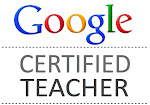Mrs. Yollis and her students live in Los Angeles, California. Through blogging, they have connected with a class that is 8,000 miles away in Australia!
Here are the flags for each nation.
How are they alike? What do the symbols and colors mean?
American Flag
Australian Flag
The Australian blogging buddies first connected on International Dot Day. Each class made a Connect the Dots at our School presentation.
Mrs. Yollis Skyped into Miss Jordan's class at Barwon Heads Primary School. A topic of discussion was Vegemite.
After the International Dot Day post was published, comments started rolling in. Here are some blog comments between the Australian and American classes. The topic of vegemite came up again!
Will, Jake S., and Mila Replied to Daisy:
Daisy, From Australia, Replied to Mila and Jake:
As luck would have it, one of our parents is from the Land Down Under! Sam's father was born in Victoria, Australia, and came to the class to share about Australia and give everyone a sample of Vegemite!
 |
| Photo by Mrs. Yollis |
First, our Aussie friend talked about his native country. Students looked at a map of Australia. Why do people in the northern hemisphere call Australia the Land Down Under?
 | |
|
Next, it was time to have some Vegemite! Sam's father brought in bread, a toaster, butter, and Vegemite.
 | |
|
After tasting the Vegemite, students were surveyed.
Do you like Vegemite, yes or no?
20 yes
3 no
Students lined up for seconds! Vegemite was a hit!
A big THANK YOU to Sam and his family for providing this special treat of Vegemite!
What did you learn about Australia?
Please thank Sam's father for his contribution. (Do not used last names. Always limit personal information on the internet!)
What would you like to know about Australia?
























































